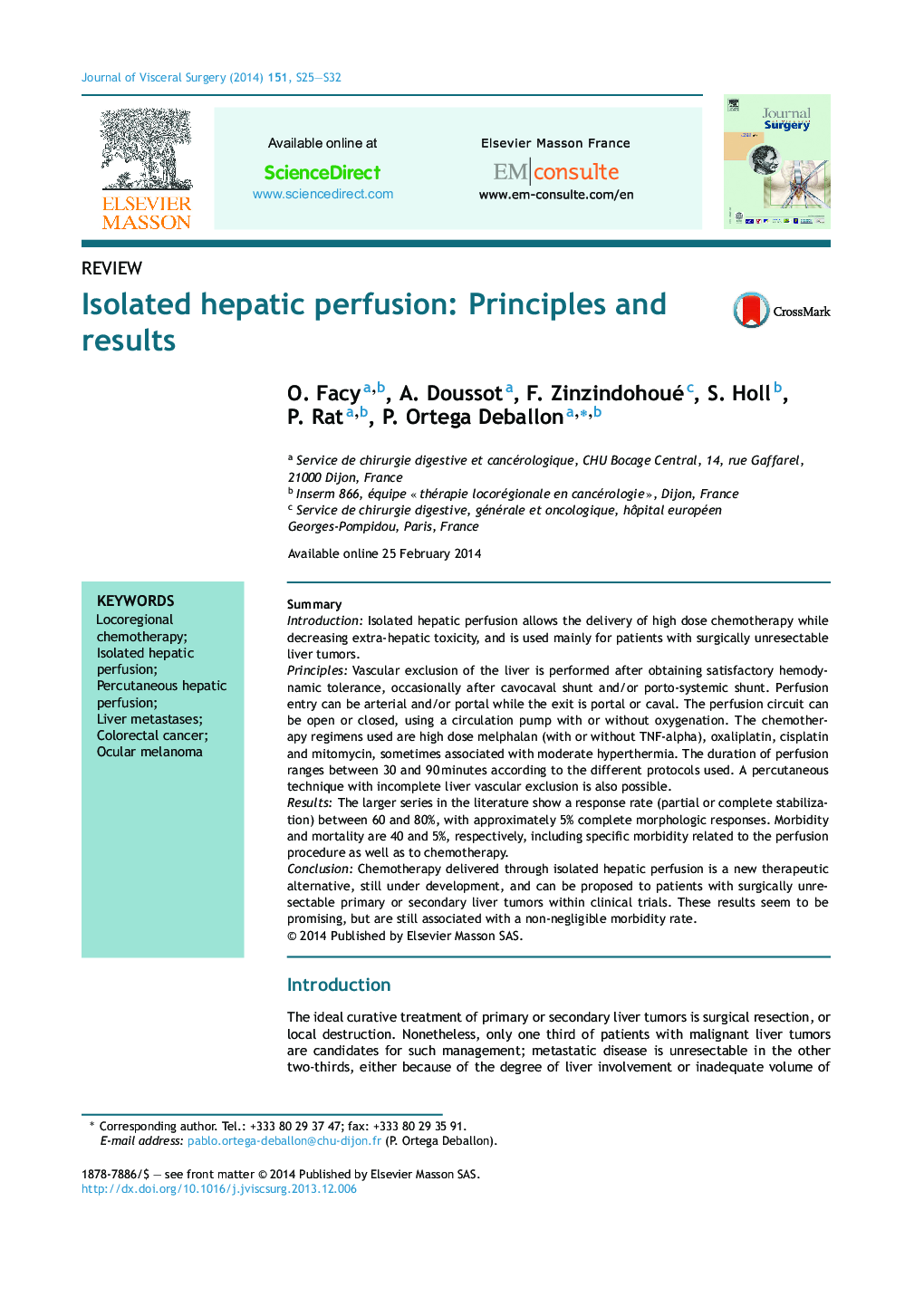| Article ID | Journal | Published Year | Pages | File Type |
|---|---|---|---|---|
| 3316061 | Journal of Visceral Surgery | 2014 | 8 Pages |
SummaryIntroductionIsolated hepatic perfusion allows the delivery of high dose chemotherapy while decreasing extra-hepatic toxicity, and is used mainly for patients with surgically unresectable liver tumors.PrinciplesVascular exclusion of the liver is performed after obtaining satisfactory hemodynamic tolerance, occasionally after cavocaval shunt and/or porto-systemic shunt. Perfusion entry can be arterial and/or portal while the exit is portal or caval. The perfusion circuit can be open or closed, using a circulation pump with or without oxygenation. The chemotherapy regimens used are high dose melphalan (with or without TNF-alpha), oxaliplatin, cisplatin and mitomycin, sometimes associated with moderate hyperthermia. The duration of perfusion ranges between 30 and 90 minutes according to the different protocols used. A percutaneous technique with incomplete liver vascular exclusion is also possible.ResultsThe larger series in the literature show a response rate (partial or complete stabilization) between 60 and 80%, with approximately 5% complete morphologic responses. Morbidity and mortality are 40 and 5%, respectively, including specific morbidity related to the perfusion procedure as well as to chemotherapy.ConclusionChemotherapy delivered through isolated hepatic perfusion is a new therapeutic alternative, still under development, and can be proposed to patients with surgically unresectable primary or secondary liver tumors within clinical trials. These results seem to be promising, but are still associated with a non-negligible morbidity rate.
